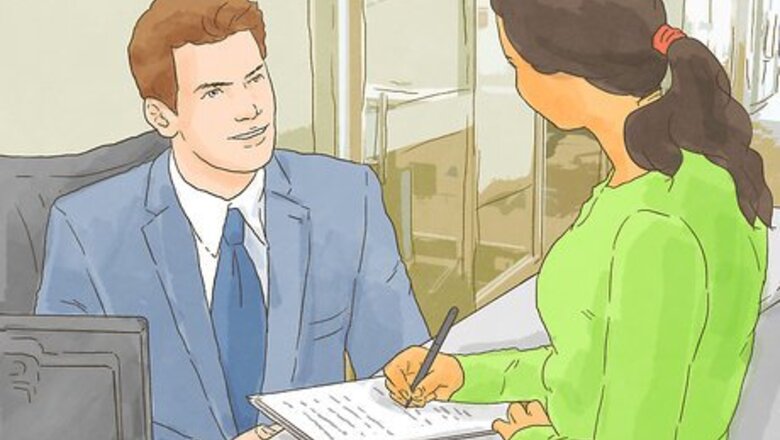
views
Encouraging Your Friends and Acquaintances to Vote
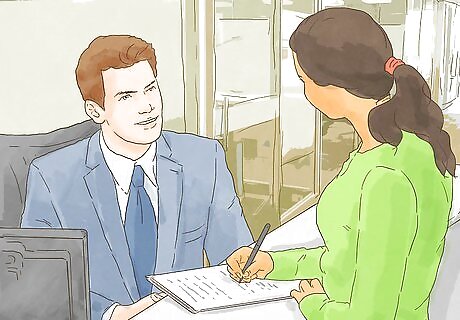
Get them registered. Apolitical people are often unaware of the procedural aspects of voting. They might not know how or when to register or think it puts them at risk of being arrested (it doesn’t). When a voter is registered, they feel more like they’re a part of the political process, which in turn encourages them to cast a vote. If you want to know how voter registration works in your state, simply go to https://vote.usa.gov/, and indicate which state in which you would like to vote. The website will take you to the appropriate state website, where you can register online if your state allows. If you can register online, you can register your friend to vote without even leaving your house. Make sure that you register them within the deadline, which is usually 15-30 days before an election, although some states have Election Day voter registration. You can see a list of deadlines at https://www.usa.gov/voter-registration-deadlines.
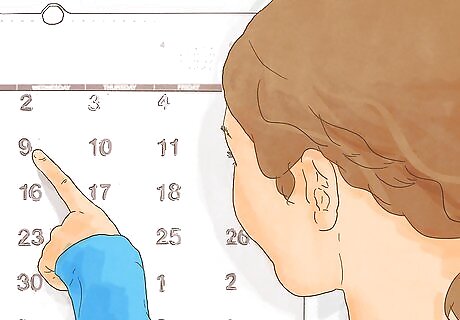
Remind them of the date. A lot of nonvoters simply forget about Election Day. Even if they realize it the day of, they may have already made other plans. Make sure they know about the date, and if they think anything might conflict with voting, have them cast an absentee ballot. Election Day 2016 is on Tuesday, November 8th. The easiest way to request an absentee ballot is by going to a website like https://www.usvotefoundation.org/ or https://www.vote.org/. Just enter your address and they’ll email you an absentee ballot application for your state, provide the proper return address along with any deadlines associated with getting your ballot in on time.
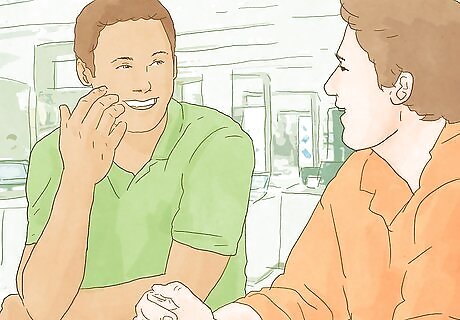
Strike a deal with them. It would be illegal to actually pay a friend or acquaintance to go and vote, so don’t do that. However, the next time your nonvoting friend asks you for a small favor, make a deal with them. Condition the deal on them casting a ballot, no matter who it’s for. For instance, if your friend asks you to give him a ride to the store, say “Sure. But you’ve got to do me a favor as well. Go vote. It doesn’t matter who you vote for, just vote. “

Find an issue they care about. The government touches everyone’s lives in more ways than one, and everyone has an opinion about how the government should handle various issues—even if they don’t realize it. Use that to your advantage when you’re encouraging a friend to vote. A lot of nonvoters have a very hazy understanding of what the government does and what levels of government carry out which functions. But almost everyone cares about what happens in their own communities. A great deal of the everyday functions of government are carried out by local officials like school board members and city councilors. These are among the easiest elections to influence, because the electorates are so small.
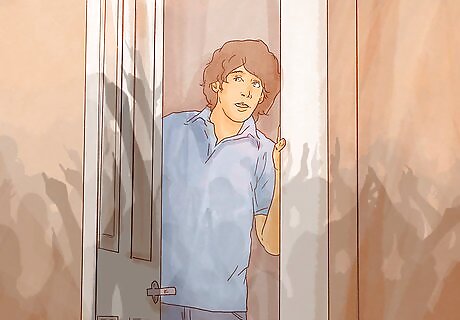
Scare them. Fear is an excellent motivator, and voting is no exception. If you can’t get your targets to vote for a positive vision of the future, convince them to vote against a vision of impending doom. You don’t have to be dishonest to do this. Powerful officials like the President are often called up to make a decision where there will be a winner and a loser no matter which choice they make. The outcomes of these decisions (such as where to render food aid, and when to come to the defense of the powerless), often have life and death consequences. Even local officials have a great deal of power over the day to day lives of citizens in their jurisdictions. Sheriff's departments decide which laws to enforce first, judges hold the power to deprive people of life and liberty, and school board members have a great deal of control of the local education system.
Increasing Voter Turnout
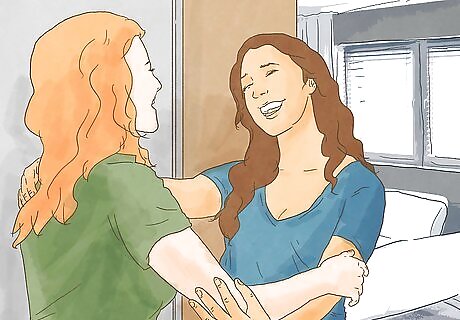
Make consistent, personal appeals. One of the best ways to get an individual voter out to the polls is through a personal appeal. A personal appeal is a home visit or a phone call to a specific person. Completing multiple personal appeals, where the same person visits or calls more than once, is so effective because it creates a disruption in nonvoter’s normal routine, allowing them to break the habit of nonvoting. In this sense, a personal appeal means an appeal to a specific person and not people in general. So you’re targeting Mary Jane Watson (a specific person), and not Spider Man’s love interests (a general group of people). Don't overdo it. You don't want to turn yourself into a pest.
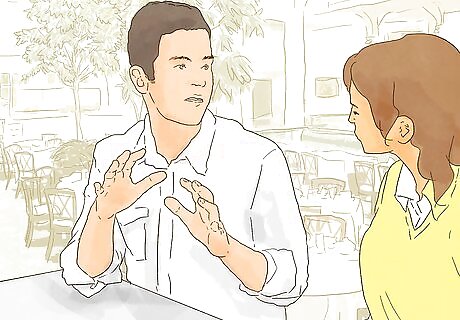
Have your targets make a plan. Another great way to increase turnout is by making a plan to vote, or walking through the steps the person will take in order to vote. In the past, it was common for campaigns to ask a potential voter whether or not they intended to vote. And that was it. There were no follow up questions. But the best practice for increasing turnout is to ask the potential voter how they plan on casting their ballot. That way, the voter can better imagine any obstacles to voting that might arise You should ask a series of questions, for example: Are they voting in person, or absentee? If they’re voting in person, do they know where the polling place is? Do they have transportation to the polls? If they’re voting absentee, have they requested a ballot? Do they know when the deadline is?
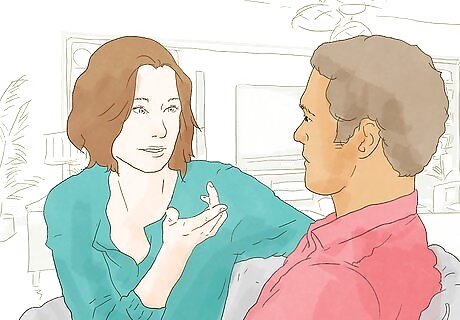
Use vocabulary to create a sense of identity. A subtle but effective way of encouraging an irregular voter is by slightly altering your vocabulary when you ask questions. For reasons that are unclear, people’s internal identity is only loosely connected to their actions—until they’re reminded of the discrepancy between the two. Use that to your advantage by emphasizing the identity of being a voter rather than the act of voting. For example, instead of: “Mr. Smith, are you planning on voting this cycle?” Say, “Mr. Smith, how important is it to you to be a voter in 2016?”

Tell the voters that there will be a high turnout on Election Day. It took a long time for campaign professionals to realize saying turnout on Election was has going to be high rather than low was a more effective strategy for stimulating turnout. Although it’s easier to influence a low turnout election and the votes are needed more, the fact is this: No one wants to go to a party that’s dead and no one wants to be on a losing team. An effective appeal would look something like: “We are expecting a record turnout this Election Day. The other side knows how close we are to victory, so they’re pulling out all the stops. We need every single one of you to get out to the polls and make a commitment to bring someone with you.”
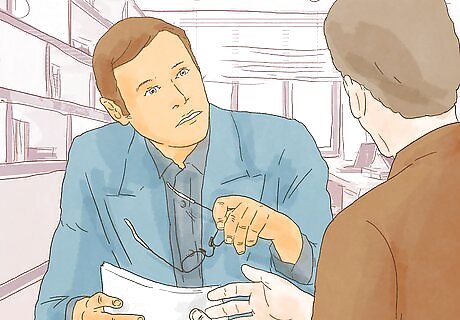
Guilt them. This is a more controversial strategy, but it works. Who votes and who doesn’t is a matter of public record (there’s no record of how they vote, just that they voted), so you can use it to your advantage. First, target an irregular voter that’s registered to your party or in a heavily partisan area. Then, send a mailer to their house correlating their record of nonvoting to a disastrous outcome. For example, “Clara, you only voted once in the last four elections. In 2012, a year you sat out, Mephistopheles was elected to represent HD-2. Since then, it’s all come crashing down. Clara, are you going to let the world burn again in 2016? Please do the right thing.”



















Comments
0 comment